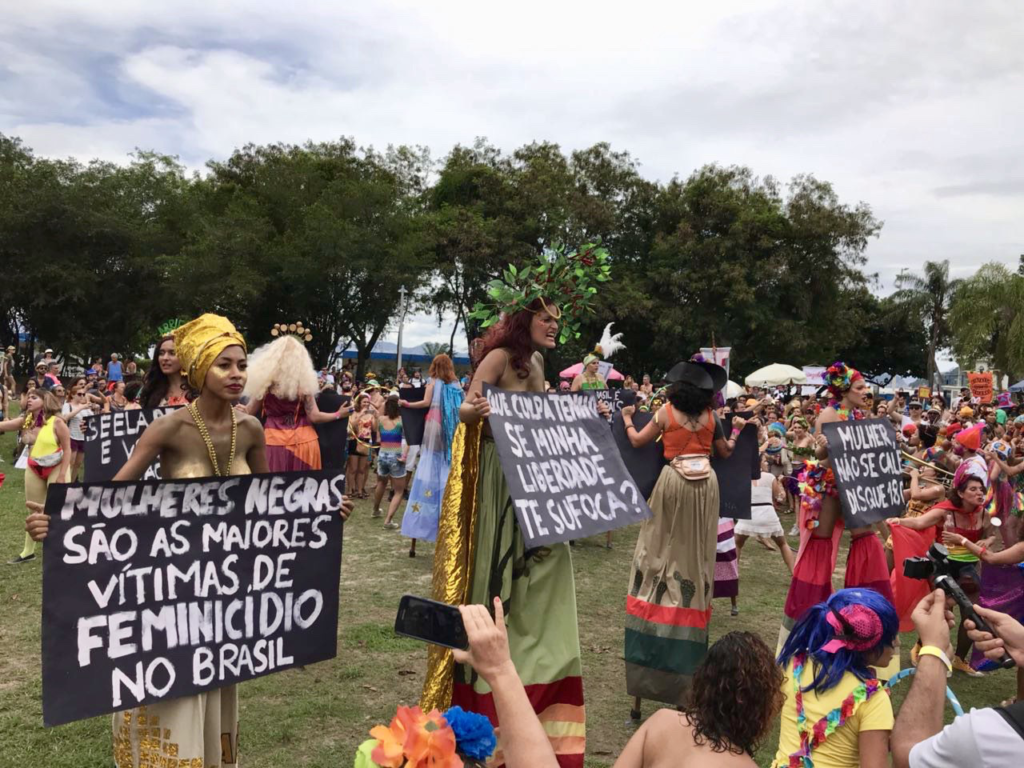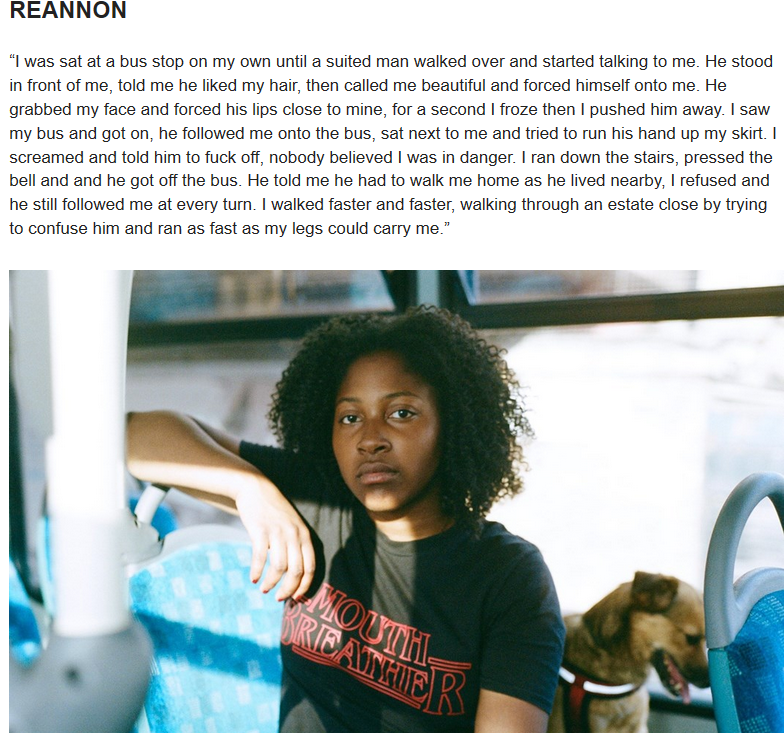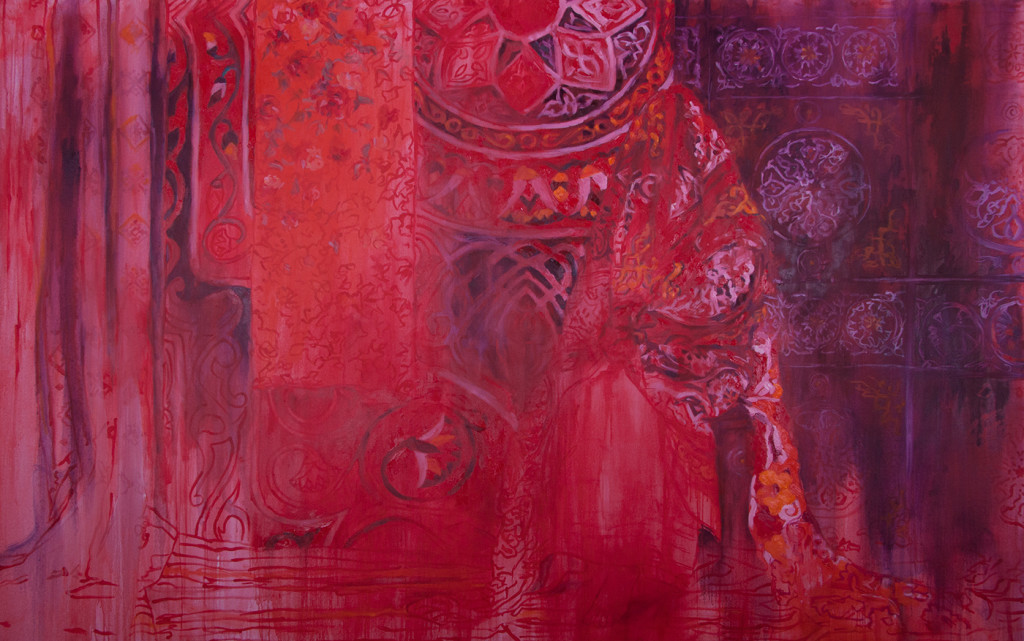Yasmin Curzi, Rio de Janeiro, Brazil, SSH Blog Correspondent
”Márcia Benevides. Presente.”[1]
It was with tears that the “Women who get around” feminist Carnival block began its procession on Ash Wednesday, in the South Zone of Rio de Janeiro. In September of last year, one of its members, Marcia, was cruelly murdered by her former partner, from whom she was getting separated. She had sought the workshops of the bloco – which take place throughout the year, in preparation for Carnival – precisely to deal with the separation process. From the workshops, she found the comfort and strength to go ahead.
In her honor, the first song of the Carnival procession was “Folhas Secas” by Nelson Cavaquinho, from “Estação Primeira de Mangueira” one of the first of Rio’s samba schools. “They killed one of us,” said Renata Rodrigues, one of the founders of the bloco. She was heartbroken that Márcia was supposed to be free and alive and parading this year, but now she was dead due to misogynist violence.
Next, the band, comprised mainly of women, followed the procession, playing classic samba and popular music as Clementina de Jesus’ “Marinheiro Só”, “Ouvi alguém me chamar” by Dona Ivone Lara, “Ô abre alas” by Chiquinha Gonzaga and “Lenda das Sereias” by Marisa Monte, but also funk, making the audience shout while walking through the streets, “I don’t wait for the carnival to be a bitch, I am one everyday”, verses of Pablo Vittar’s “Todo dia” and “Hoje” by MC Ludmilla. The members of the bloco wielded banners of female canons of Brazilian music, but also of Nina Simone.
The “hula hoop dancers section” was the Commission of Front of the bloco. The women spinning and dancing with the hula hoops were followed by the “wooden leg section”: seven women and a girl of about 10 years old, wearing costumes and wooden legs. Finally, they were followed by the band and around them, hundreds of women, men and children, jumping, shouting and singing along.

The procession went from Largo do Machado to Aterro (about 1km), where there was an incredible performance set to the music of “Geni e o Zepelim” by Chico Buarque. The “wooden leg section” held posters denouncing feminicide and misogynist violence. One could read that Brazil ranks fifth in the world for the number of women murdered due to their gender (crimes motivated by gender hate, such as domestic violence and sexual violence) and that Black women are still the number one victims of gender violence in the country. There also were signs encouraging women to report harassment.

They then simulated a funeral and threw flowers over a woman’s body. While the band played “Throw rocks at Geni! / Throw shit at Geni! / She’s made to be beaten! / She’s good to spit on! / She will screw anyone! / Damn you, Geni!”, the audience shouted, “No!”
This was an example of how art can be utilized for feminist causes, in this case, to show that it is intolerable for women to be victims of violence only because they want to be free.
Another highlight to me were efforts by the “Mete a Colher”[2] organization, which, in partnership with the organization “Meu Recife” produced the report “Happened in Carnival.” This report focused on reports of violence suffered during the Carnival and highlighted the necessity of public policies to address the problem. Renata Albertim (co-founder of Mete a Colher) said that in the, “(…) Last year we collected 66 reports and presented them to the Women’s Secretariat of Recife and to the Women’s Secretariat of the State of Pernambuco. This year, the Secretary of State promised a more ostensible policing at the points we identified that the more the harassment happens.”
In Rio de Janeiro, the “Carnival without Harassment” campaign took over several blocos – promoted by Catraca Livre, in partnership with “Azmina” magazine and the collectives “Now it’s them”, “We Women of the Periphery” and “Let’s go together?”
The stickers were distributed free of charge during the processions and it was also possible to buy removable tattoos with “No is no!” to wear.
The denunciation of the coup was also remembered by the bloco, which sang the cries of “Fora Temer” and “Fora Crivella”.
“Women who get around” is more than just a fun bloco: it is the materialization of the counter-discourse in the streets and is absolutely necessary to change our culture.
Conservative parties define all these movements as part of a “gender ideology.” They think that to show the many ways that female subordination and male domination are normalized is to threaten a “natural order” of things. They use this phrase as a motto and turn it into a great scarecrow, capable of camouflaging their real intentions: economic programs of religious sectors, alliances with private capital and support for labor rights retrogressions. These conservative sectors do not want to debate gender roles and are generally extremely reactionary to social transformations. One group placed a figure simulating Judith Butler in a “bonfire”, in an “inquisitorial act,” calling her a witch – they wanted to crystallize the “place of women” around an ideal of femininity and subalternization. They don’t see toxic masculinity as the real cause of violence and instead, they blame victims for the attacks suffered.

In her book Caliban and the Witch, Silvia Federici discusses the transition from feudalism to capitalism from a gender perspective, pointing out that it was essential for capitalist accumulation to make women circumscribed to private spaces, with domestic work being unpaid, in addition to state control of reproductive functions. The myth of witchcraft was fundamental to legitimize the genocide of women and the control of bodies, solidifying this social structure. The reproductive autonomy of women was precisely the greatest of all crimes – not surprisingly, witches were generally represented by women who did not dedicate their lives to the domestic sphere and who broke with the ideals of the time in some way.
For today’s conservatives, as well as the inquisitors of the Middle Ages, it is an assault on the natural order of things that gender roles are put into question. Federici also shows that capitalism is responsible for producing these moments of intellectual retreat to maintain its hegemony. Certain segments of the political elite enact it to remain in power in times of profound economic crisis.
But we also know that a certain noise is being produced when we see the reactionary extremely uncomfortable. If the status quo were not being shook, there would be no need to organize so many obscure acts. There is, therefore, room for women to infiltrate cultural “gaps” and contest the hegemonic discourse – denouncing, questioning and talking about corporal autonomy, about violence, about their places in public institutions and in the market. Bringing these issues to the streets makes Carnival a way for feminists to raise awareness and agitate for change!
Although during this Carnival there were some of the same problems as always – there were a lot of cases of sexual harassment, abuse and violence – overall, Carnival 2018 was marked by political acts, anti-harassment campaigns and demonstrations of sorority.
[1] “Presente” is what people say in protests to remember people who were victims of violence and public personalities that are important for the cause.
[2] In Brazil there’s a popular quote that says, “Em briga de marido e mulher não se mete a colher.” It means, “When husband and wife fights, one does not interfere.” The campaign “mete a colher” puts in evidence the necessity to look to domestic violence as a social issue.
Yasmin is a Research Assistant at the Center for Research on Law and Economics at FGV-Rio. She has a Master’s Degree in Social Sciences from PUC-Rio where she wrote her thesis on street harassment and feminists’ struggles for recognition.





